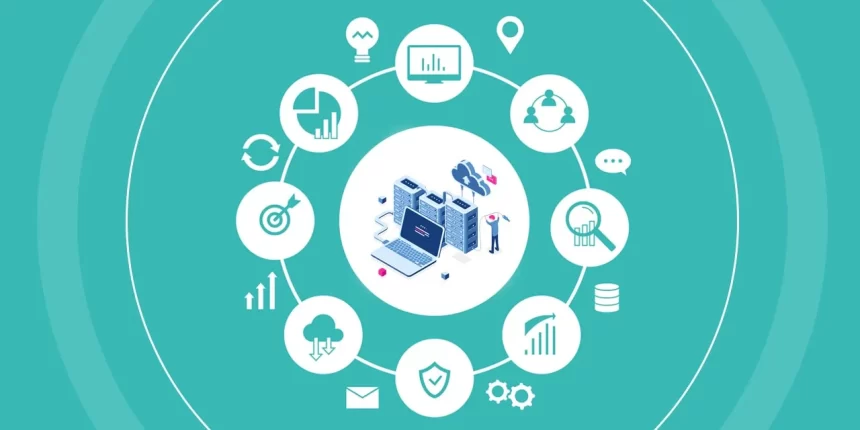Big data analytics is the often-dynamic method of analyzing big data to discover information that can help companies make better business decisions. Data analytics tools and techniques on a wide scale provide companies with a way to analyze data sets and obtain new information. Business intelligence (BI) queries address fundamental questions regarding results and business operations. Big data analytics is a type of advanced analytics that involves complex applications with components like analytical systems-powered predictive models.
Importance of Big Data Analytics
Organizations can use big data analytics systems and software to make data-driven decisions that can enhance business-related results. More efficient marketing, new sales opportunities, customer personalization, and increased operating performance can benefit. These advantages may provide competitive advantages in a successful approach over rivals.
How does Big Data Analytics work?
Data scientists, data analysts, statisticians, predictive modelers, and other analytics professionals collect, process, clean, and analyze growing volumes of structured transaction data as well as other forms of data not used by conventional BI and analytics programs. Increasing volumes of organized transaction data not used by traditional BI and analytics systems are collected, cleaned, and analyzed by analytics professionals.
An overview of the four steps of the process of data preparation is given here:
Data professionals gather knowledge from several sources: Often, it’s a mixture of semi-structured and unstructured details. Although each organization will use various data streams, some familiar sources include internet clickstream data, web server logs, cloud applications, mobile applications, social media content, text from customer emails and survey responses, mobile phone records, and machine data captured by sensors connected to the IoT.
- Data is processed: After data is gathered and stored in a data warehouse, data professionals must arrange, configure and partition the data for analytical queries. Thorough data analysis from analytical queries allows for better efficiency.
- Data is cleansed for quality: Data professionals scrub the data using scripting tools or business applications. They look for any mistakes like duplications or errors in formatting, and arrange the details and clean it up.
With analytics tools, the stored, processed, and cleaned data is analyzed. It includes data mining tools, predictive analytics, machine learning, deep learning, text mining, statistical analysis software, artificial intelligence (AI), data visualization tools, and mainstream business intelligence software.
Uses and Examples of Big Data Analytics
Here are some examples of how it is possible to use big data analytics to benefit organizations:
- Customer Acquisition and Retention: Market data can assist businesses’ marketing campaigns, responding to trends to improve customer satisfaction. For instance, personalization engines for Amazon, Netflix, and Spotify can enhance user interactions and develop customer loyalty.
- Targeted Ads: Personalization data from sources may help create effective targeted ad campaigns on a person and a broader scale.
- Product Development: Big data analytics can provide insights into product feasibility, development choices, measurement of progress, and guide changes in best outputs for the company.
- Price Optimization: Retailers can choose pricing models that use data from various data sources to optimize sales and model them.
- Supply Chain and Channel Analytics: Predictive analytical models can assist with preemptive replenishment, B2B manufacturers networks, inventory management, optimization of routes, and notification of imminent delivery delays.
- Risk Management: Big data analytics can detect unknown risks for efficient risk management strategies from data trends.
- Improved Decision-Making: Extracting information from business users’ applicable data will help companies make faster and wiser decisions.
Advantages of Big Data Analytics
- Quickly processing vast volumes of data, in several different formats and forms, from various sources.
- Rapidly making better-informed strategic decision-making decisions can benefit from and optimize the supply chain, activities, and other strategic decision-making areas.
- Cost savings, which can benefit from efficiencies and optimizations of new business processes.
- A deeper understanding of customer needs, attitudes, and sentiments can contribute to better marketing insights and provide product development knowledge.
- Improved, better-informed strategies for risk management that rely on large sample data sizes.
Challenges of Big Data Analytics
Despite the wide-reaching advantages that come with the use of big data analytics, there are also barriers to its use:
- Data Accessibility: Storage and retrieval are becoming more complex with more significant volumes of data. Big data should be adequately processed and managed to ensure that less skilled data scientists and analysts can access it.
- Maintenance for Data Quality: Data quality control for big data takes considerable time, effort, and money to maintain properly. High quantities of data come in from several sources and in various formats.
- Security of Data: The complexities of big data systems pose specific security problems. It can be a complex undertaking to correctly resolve security issues within such a complex Big Data ecosystem.
- Choosing the Proper Tools: It can be confusing to choose from the vast array of big data analytics tools and platforms available on the market. So, companies need to know how to choose the right solution that aligns with users’ needs and infrastructure.
- With a potential shortage of internal analytics expertise and the high recruiting cost, some companies are finding it hard to fill the holes.










